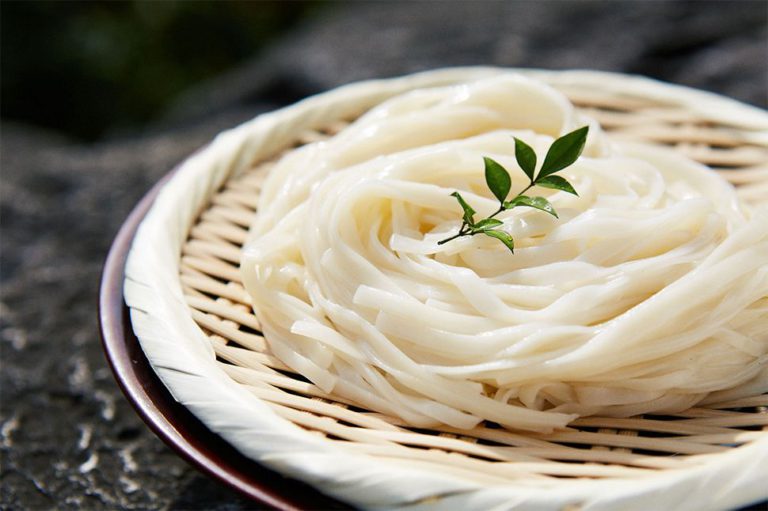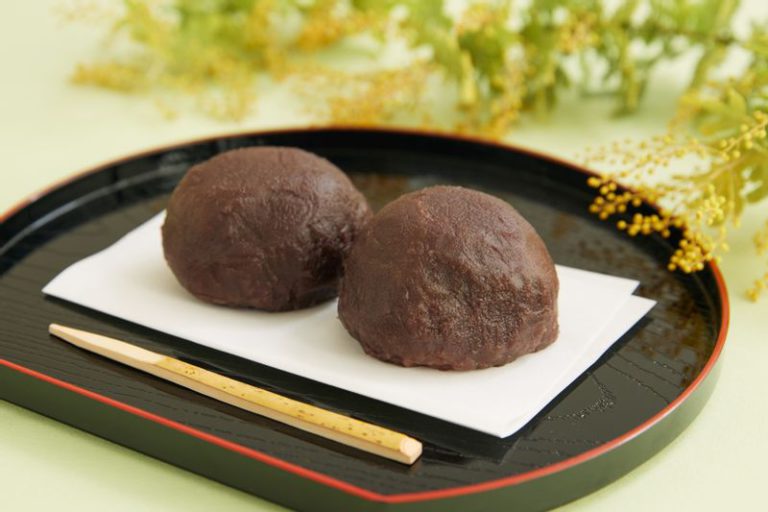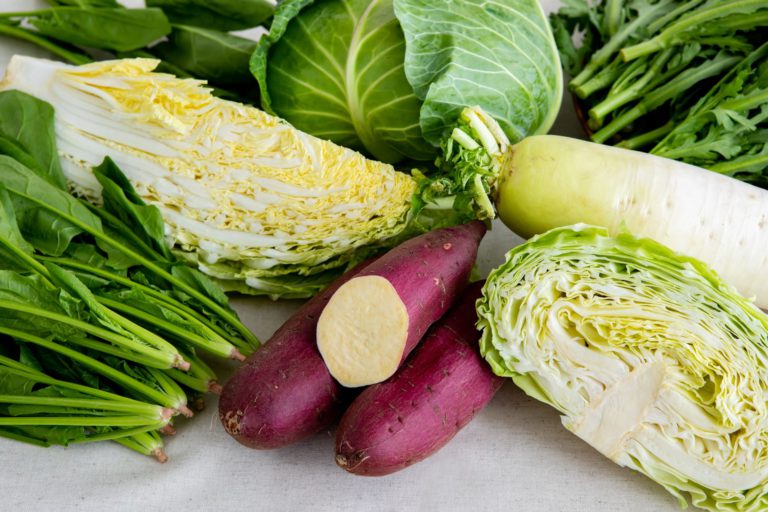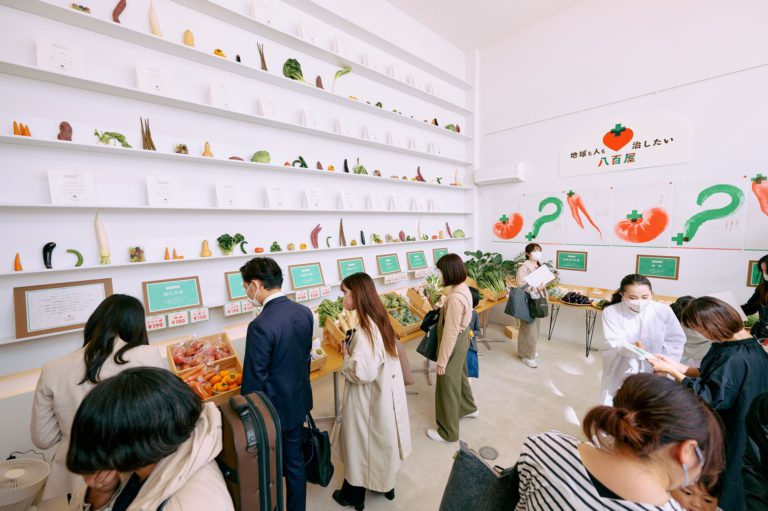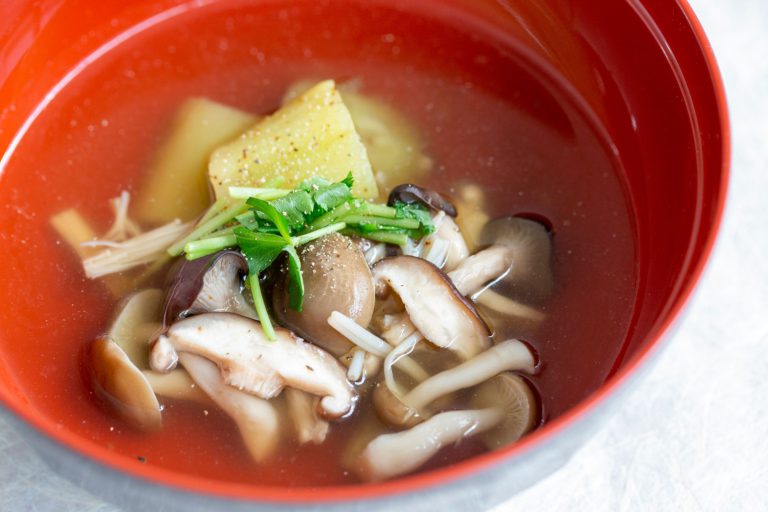From one generation to the next: An udon-making tradition lives on in Japan’s snow country
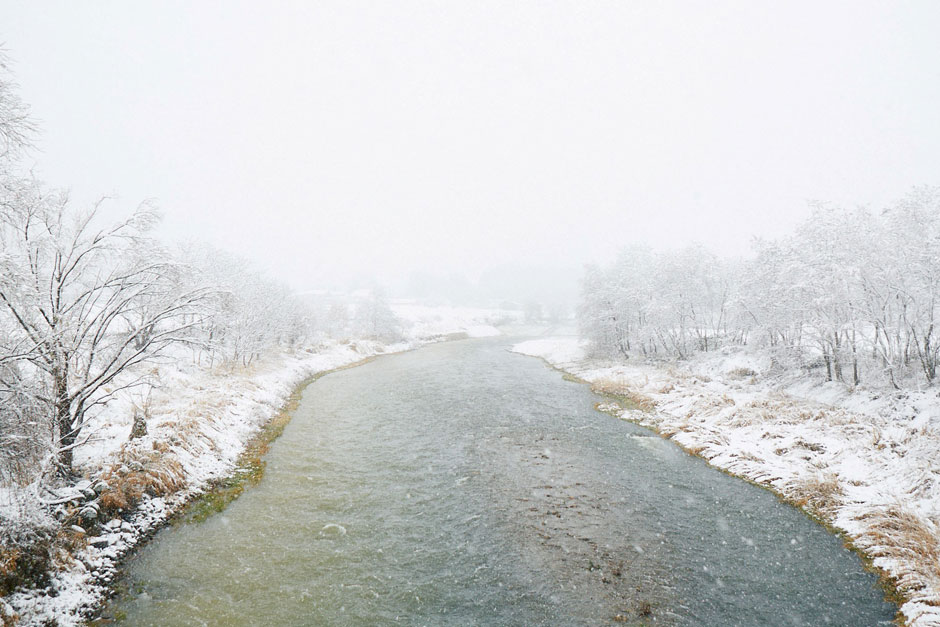
Flourishing in the agricultural off-season of winter
Inaniwa udon has been made since 1665 in Inaniwa-cho, a town blessed with clear air and pure water and located near Mt. Kurikoma in the Ou mountain range.
Inaniwa udon is made using a unique process called tenai, which involves strands of dough being skillfully twisted and rolled out by hand. The amount of Inaniwa udon that could be made was always limited because of this time-consuming process, and it is said that, in the early days, it was mainly offered to the feudal lord as a tax payment and was rarely eaten by the general populace.
The making of Inaniwa udon was a domestic industry involving only the inhabitants of the Inaniwa district, and this goes some way to explaining why there were so few producers. However, young people living on farms began making the noodles during winter when there was little agricultural work to do, and a gradual spreading of this practice led to an increase in the number of Inaniwa udon producers. This is how udon-making came to be a thriving industry in this region.
Kanbun Gonendo protects and passes on the traditional technique
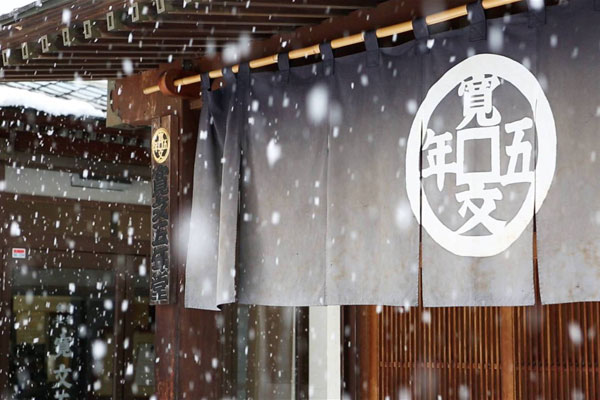
Kanbun Gonendo was the first udon maker in the Inaniwa district to build a system for the mass production of udon. Its head office and factory offer an impressive view of Inaniwa Castle sat upon its hill, and the company currently has some 70 craftspeople engaged in the process of making udon. To find out a little more about the company, we spoke to Kanbun Gonendo’s sales director, Mr. Yasuhiko Abe. “Making Inaniwa udon used to be greatly affected by the weather, and it was laborious work. Fine adjustments to the firmness of the dough had to be made depending on the day’s temperature and humidity, and the noodles always had to be dried inside the building because it often snowed in winter. A site for the mass production of Inaniwa udon needs to have a certain amount of space, and this made it difficult for us to continue working in the environment of the old factory.”
Having overcome a number of obstacles, the company now makes its noodles in a factory that maintains a fixed environment all year round.
However, a good environment alone does not guarantee tasty Inaniwa udon. Other key requisites are the refined techniques and expertise that have been handed down over the years by the craftspeople that make these noodles.
A time-consuming process of working and resting the dough results in a unique firm texture
Flour, water, starch, and salt are the only ingredients used in the making of Inaniwa udon. First, these ingredients are mixed together to form a ball of dough, and this is then kneaded by hand. The kneading of the dough determines the quality of the udon, and it is said that there are only a few people who can do this well.
“The dough is kneaded firmly with the entire weight of the kneader behind it. Removing all of the unnecessary air in this way is what gives our udon its unique firm texture,” explains the factory manager,Mitsugu Sasaki.
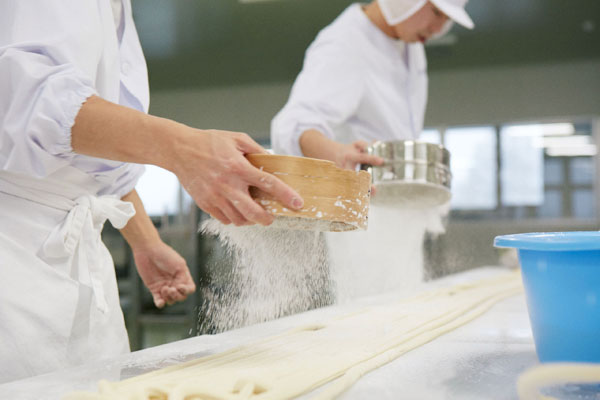
The kneaded dough is set aside to rest for about one day in a room maintained at a fixed temperature and humidity. After this, the ball of dough is cut into strands, which are then laid out in concentric circles in round bowls. The dough is again set aside to rest. A key factor here is the use of starch for dusting. Applied to prevent the noodles from sticking together, the starch is actually absorbed into the dough when the noodles are left to rest, resulting in the silky smooth texture that is distinctive to Inaniwa udon when it is cooked. Sasaki emphasized the importance of starch, saying: “Cooking oil is often used in the process of rolling out thin somen noodles, but starch is used for Inaniwa udon. Without the use of starch, the noodles would seem dry and lack the texture that defines our udon.”
The rolled-out dough is then subjected to the tenai process, where it is rubbed, twisted, and rolled out into thinner strands and then draped in the shape of a figure 8 over two rods.
“Tenai is one of the most important steps in the making of Inaniwa udon. Rolling the strands out while rubbing and twisting them brings out the udon’s distinctive firm texture,” says Sasaki.
Combining expertise and passion to produce a delicious flavor
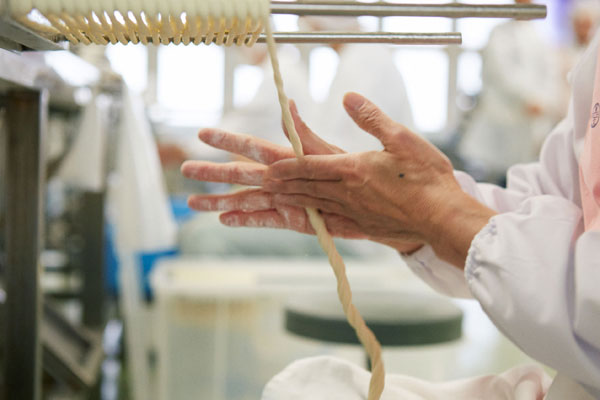
“Single-minded concentration” best describes what springs to mind when you see the craftsmen sitting opposite each other silently immersed in carrying out tenai. The movements involved in performing tenai differ from person to person. Because this is such a unique skill, it is said that each person perfects his or her own style over the years. We spoke with Ms. Kotoko Kominami, a highly skilled craftsperson with some 30 years of experience.
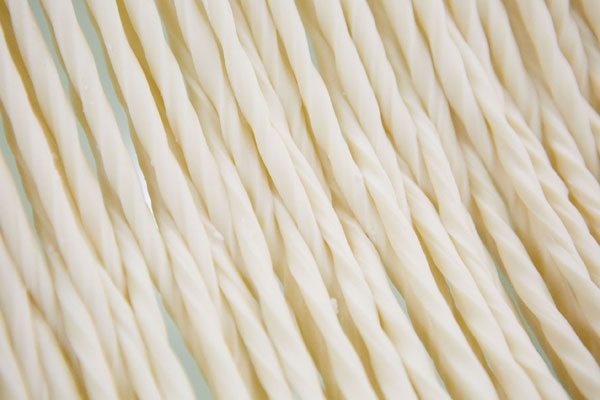
“I had a very difficult time with tenai at first. But I kept on trying and gradually got the hang of it. I think that experience is the most important factor in making udon. In the factory, we are all involved in the various processes of udon making, but I like tenai the most. Moving my hands from right to left and being totally immersed in my work?I forget the time and before I know it, half a day has gone by. Tenai work is pleasant to watch and it’s fun to do,” she told us, her eyes shining.
After the tenai process, the udon is pressed flat, rolled out even more to remove any remaining air and then left for about an hour to age. After that, the noodles are hung on a drying rack, rolled out even more, and then subjected to the final drying process. At Kanbun Gonendo, the udon noodles are not dried in one go, but are instead carefully dried over time in a humidified environment. Doing so produces supple, high quality udon that will not break even if the dry noodles are bent.
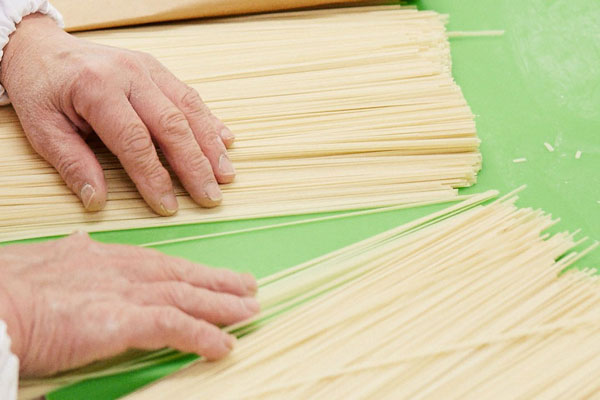
The final step in the udon-making process is inspection and packaging. Here too, we find a commitment to quality that is typical of Inaniwa udon.
“Since the udon noodles are rolled by hand, slight differences can be found in their thickness. If cooked noodles contain any differently sized, thicker noodles, it will spoil the overall texture, so we cannot allow these onto the market. To maintain our quality, we always conduct a visual inspection of the udon and reject any that are bent, thick, or short?no matter how slight the difference may be. Only about 60% of all the udon we produce makes it onto shop shelves. This may seem inefficient, but we continue to place great value on the history and culture of presenting Inaniwa udon as a very special gift, so we ship only udon that the consumer will find delicious.”
A craftsman captivated by Inaniwa udon from an early age carries on the tradition
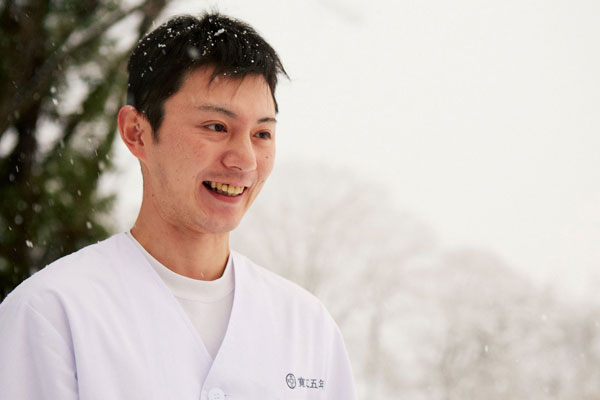
The process of making Inaniwa udon is said to differ slightly from manufacturer to manufacturer. Sasaki, the Kanbun Gonendo factory manager, says that he was unable to forget the taste of the Inaniwa Tenai Udon that he ate as a child. “Eating Inaniwa udon for the first time made a huge impression on me, and it made me realize that I wanted to be involved in its production. Back then, though, I thought that all Inaniwa udon was the same, so I first went to work at another factory. But after joining that company, I realized that the taste of the udon there was clearly different from the udon I’d had as a child. I later found out that the udon I’d had when I was young was made by Kanbun Gonendo, so I changed companies. There are many types of Inaniwa udon, but I think that the taste and texture of Kanbun Gonendo’s Inaniwa udon is superb.”
You could say that one of the reasons why Inaniwa udon differs from manufacturer to manufacturer is that so much of the work is done by hand. Also, the reason why the tradition of Inaniwa udon continues to this day can be attributed to the craftsmen who have fallen in love with its flavor and devote themselves to protecting and carrying on the traditional taste.
Limited amounts of fresh udon available only in Akita
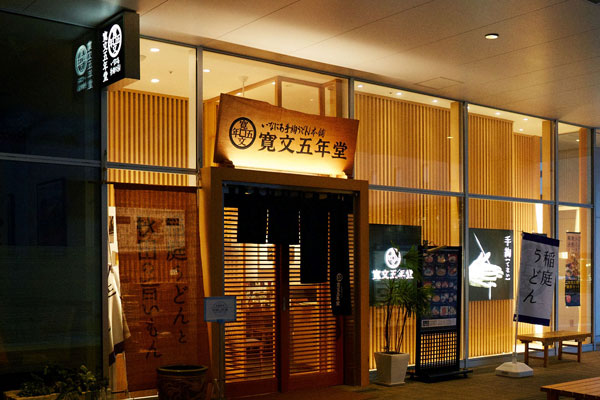
With advances in distribution technology, people all over Japan can now enjoy the taste of Inaniwa udon cooked from its dry form. Fresh Inaniwa udon, though, can be found in Akita, although in limited amounts. Fresh udon can be ordered from Kanbun Gonendo only on a production-by-order basis, but such noodles can be found at the Kanbun Gonendo Akita Shop located near Akita station. The shop’s unique dishes incorporate firm, fresh udon, providing a taste that cannot be found anywhere else. Customers can also compare the flavor of udon cooked from dried and fresh noodles, and try some traditional Akita dishes. Why not enjoy the charms of Akita to their fullest by savoring the taste of the prefecture’s famous sake and Inaniwa udon next time you visit this part of the country?
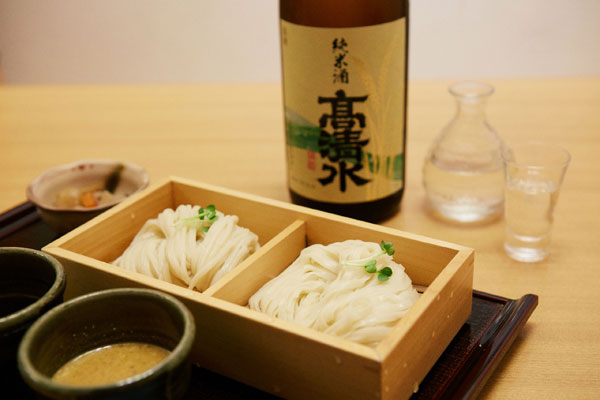
The touch of people’s hands can have a profound effect on Inaniwa udon making. During our visit to the snow country of Inaniwa, we strongly felt that the skills and passion of those involved in the udon-making process are being passed down from generation to generation in a form that is no different from when Inaniwa udon was first brought into the world.

